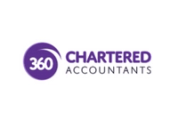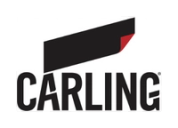
Club History
1882
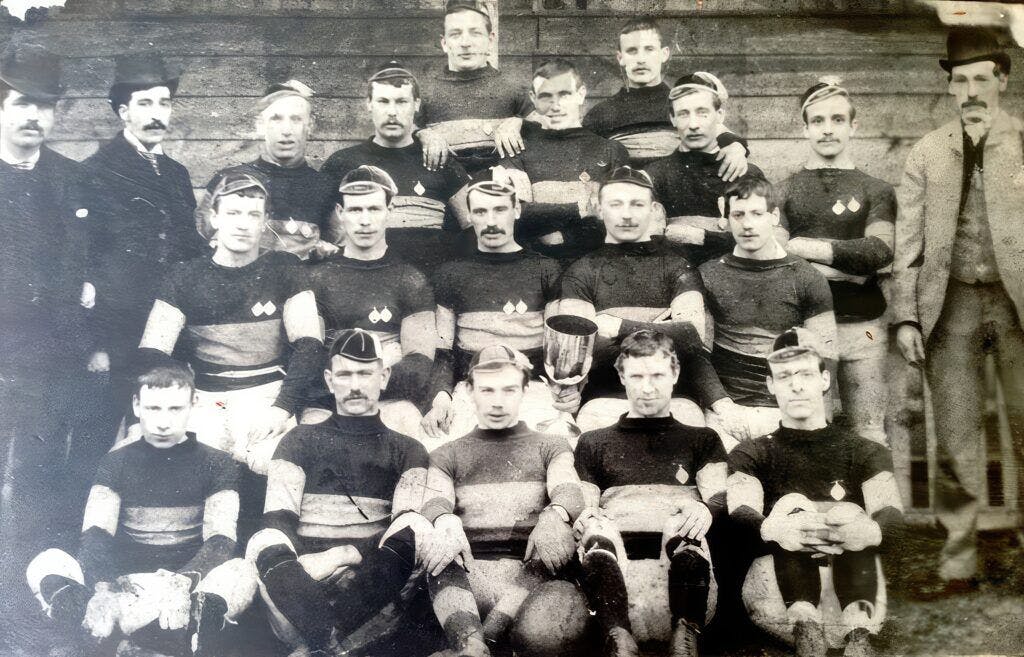
The Beginning
Hull Kingston Rovers were formed in 1882, as Kingston Amateurs, by a group of young workers in the shipping industry in West Hull. They played their first season in 1883/84, wearing red jerseys with a blue band, on a very primitive rented ground off Albert Street (now Gillett Street) on Hessle Road. The ground was known as ‘Flag Edge Touch’ because on one side of the ground the touchline was denoted by flagstones, upon which spectators stood. In its early years the club played rugby union – there was only one code of rugby in those days.
Early progress was rapid; the team was successful, and it started to attract better players. The fixture list grew, and moves to better grounds meant that the club had six grounds in its first 12 years – all to the west of the River Hull. By the 1893/94 season, the club, by now known as Hull Kingston Rovers, was playing ‘out-of-town’ fixtures, had attracted its first ‘star player’ – England international back Sam Morfitt – and was renting a ground at the new sports complex on the Boulevard. The club’s original nickname, ‘the Redbreasts’, because of the red breast area above a blue band on their original jerseys, developed to ‘Robin Redbreasts’ and then simply to ‘the Robins.’
1895 was a pivotal year for the club. Hull FC, the senior club in the city at that time playing in East Hull, had taken a liking to the Boulevard ground, and offered to pay a higher rent than Rovers could afford. This meant that Rovers were faced with a big choice – stay in the west of the city and try to compete with Hull FC, or move to the east of the city. The historic decision was taken to buy the old Southcoates ground on Craven Street, and the club has remained in East Hull ever since.
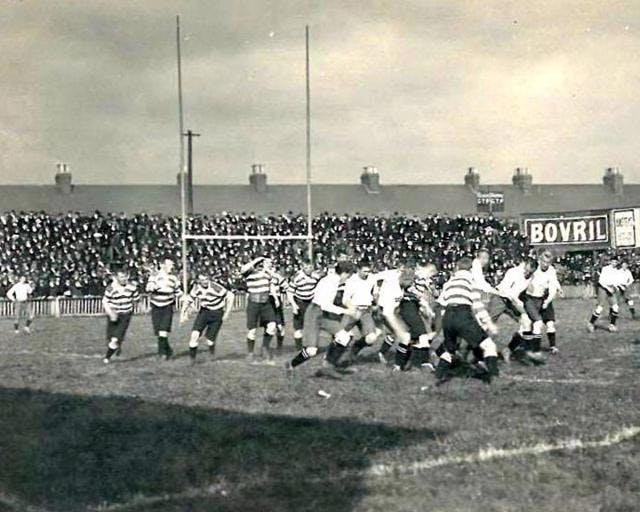
1895
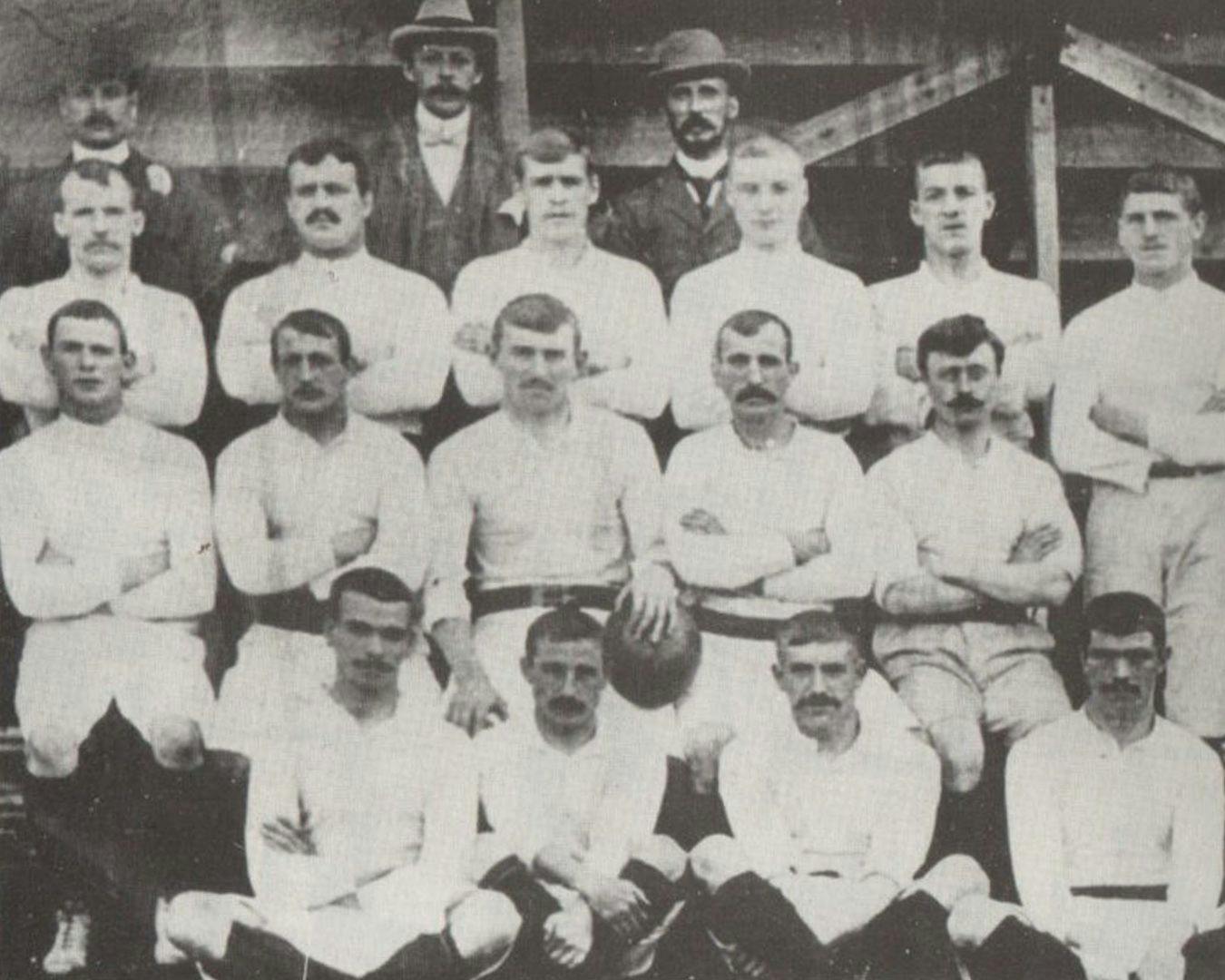
The 'Great Breakaway'
1895 was also the year of the ‘great breakaway’ when 22 senior northern clubs broke away from the rugby union, primarily over the dispute about making payments to players. Hull FC were one of the 22 clubs that formed the new Northern Union, but Rovers initially decided to remain loyal to the RFU and laid claim to being the senior rugby club in the city. A successful 1896/97 season culminated in the club winning its first major trophy, the Yorkshire Cup – or ‘t’owd tin pot’ as it was known – but the gloss was taken off this achievement when they were summoned in front of the RFU for alleged financial misconduct. At this point, the Robins took the decision to apply to join the NU for the 1897/98 season.
For their first two seasons as an NU club, because there was no place available in the NU’s Yorkshire Senior Competition, Rovers had to play friendly games against NU clubs, then in the second season, played in the second XV competition. The absence of competitive first team fixtures, other than Challenge Cup ties, for two seasons, caused much disquiet amongst the club’s players and followers. However, in 1898/99 they won the second XV competition and after a victorious play-off against the bottom side in the YSC they took their place as a fully-fledged NU club in 1899/1900.
Rovers first league fixture in the YSC was a 3-0 defeat away to champions-to-be Bradford on 2nd September 1899. Then, on the 16th of that month, they played the first competitive first team derby against Hull FC, winning 8-2 in front of a crowd of 14,000 at Craven Street. Finishing sixth out of 16 clubs in the YSC, above their neighbours, was a remarkable achievement in their first season in the NU.
Dropping two places the following season, the club did not qualify for the newly-introduced ‘Northern Rugby League’ – comprising the top seven clubs in both Lancashire and Yorkshire. Rovers refusal to obey a boycott by the remaining Yorkshire clubs of the NRL clubs, because they wanted to play ‘friendly’ derbies with Hull FC, resulted in the club being expelled from the YSC and playing in the Lancashire competition instead.
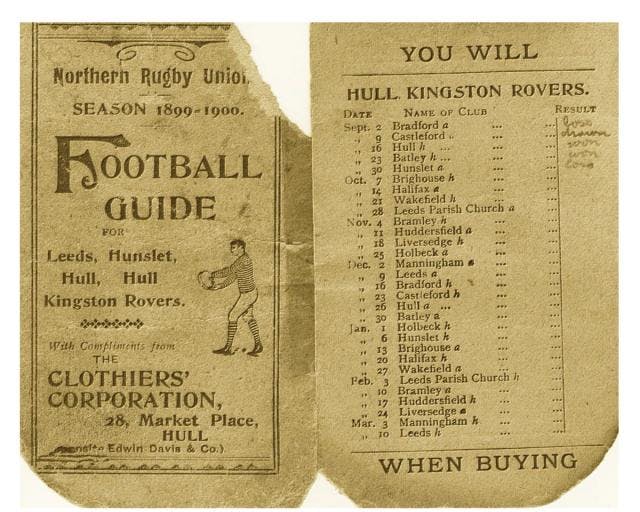
1900
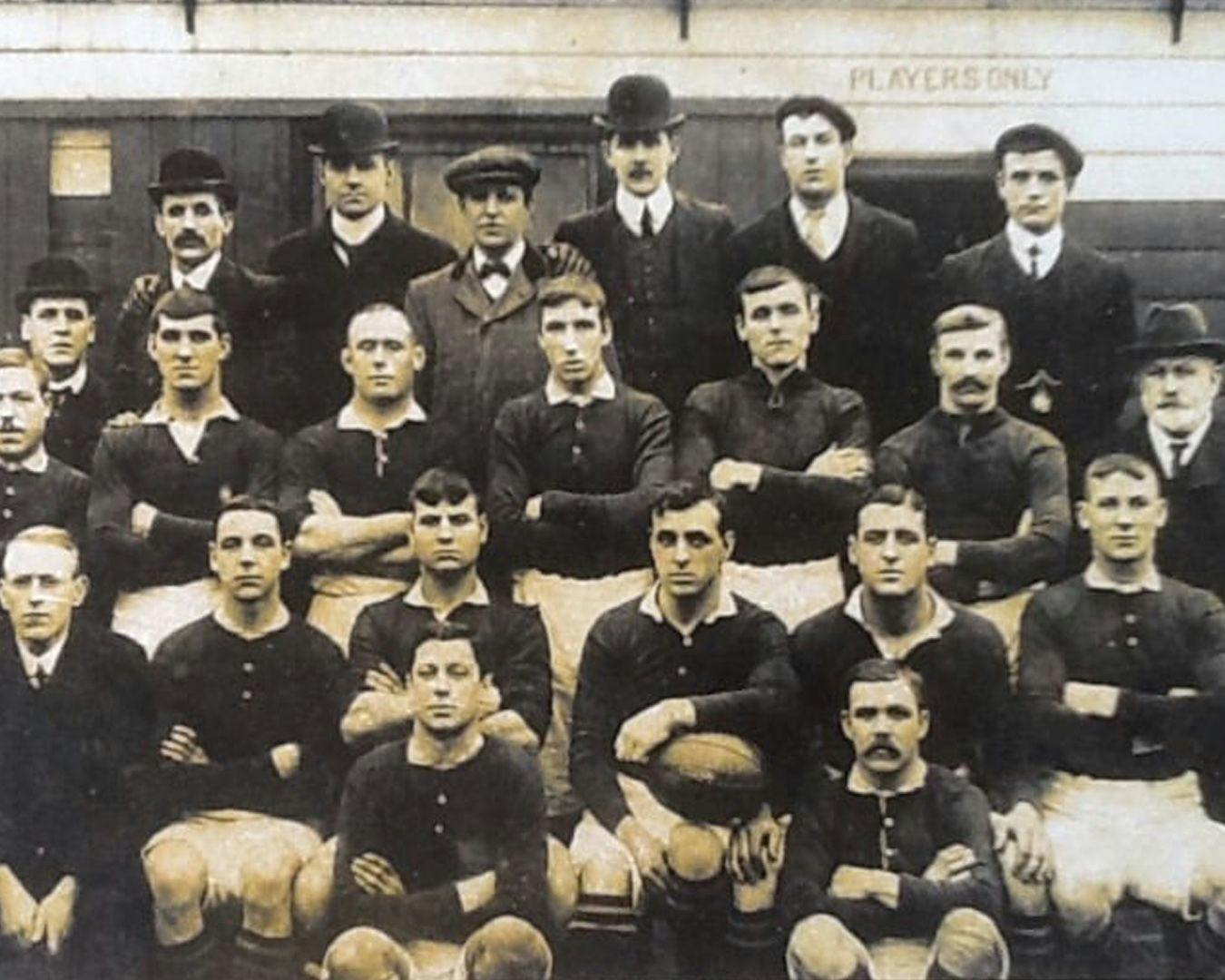
First Major Finals and the Early 1900s
Reorganisation in 1902 saw Rovers play in the new First Division as a result of their fifth place in the Lancashire competition, and they maintained their status over the three seasons before a single Northern RL competition was introduced in 1905.
The highlight of this period was the Challenge Cup campaign of 1905, when Rovers reached their first final as an NU club, being beaten 6-0 by a strong Warrington side at Headingley. A second final followed, this time against Bradford in the 1906 Yorkshire Cup, and resulted in a rather unlucky 8-5 defeat at Belle Vue, Wakefield. 1906 was also the year in which the NU made two significant changes to its rules – the reduction to 13 players per side and the replacement of the loose ruck after a tackle with the play-the-ball.
Rovers star player in their early NU days was forward Anthony Starks, who had the honour of captaining England in the first ever NU international in 1904. Rovers maintained a top half position in the first six seasons of the single NRL competition, and then, in 1911/12, they reached third place behind the mighty Huddersfield and Wigan sides, and qualified for the ‘top four’ championship play-offs for the first time.
They repeated the feat the following season, and despite play-off defeats to Wigan on both occasions, this was the first short period when the Robins could justifiably claim to be one of the top teams in the game. There was a gradual decline from 1913/14 onwards, to the extent that Rovers finished only 19th out of 22 in the 1917/18 Wartime Emergency League.
When the NU resumed after the war, Rovers introduced the white jersey with the red band that was to become so familiar for over seventy years. At the 1919 AGM, local funeral director E.W. Brown took over as club chairman for what proved to be a momentous period in the club’s history. But in 1919/20 the Robins finished in 19th place out of 25 clubs in the league and gave little indication of the successes to come.

1920
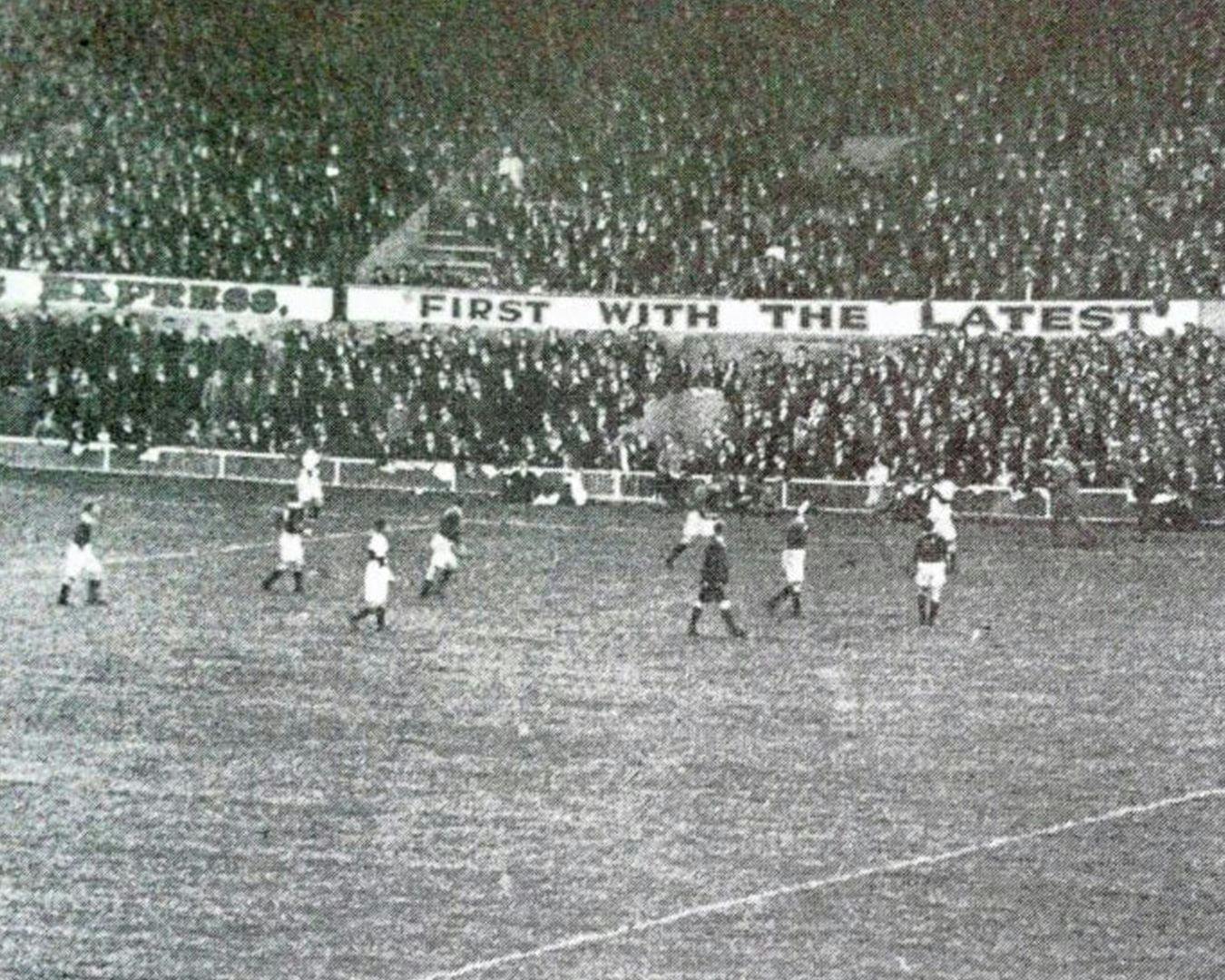
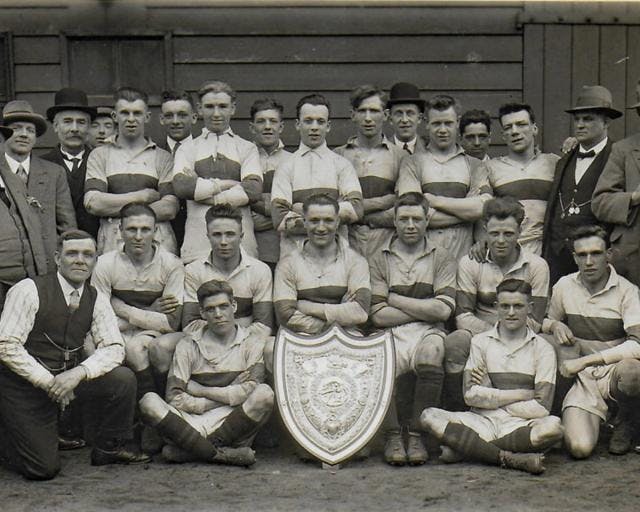
Success in the 1920s into WW2
Then, the following season, Rovers finished top of the table and their first major trophy in the NU, beating Hull FC 2-0 in the Yorkshire Cup final at Headingley on 27th November 1920 (pictured). Although the Black & Whites claimed their revenge with a 16-14 win in the end-of-season Championship Final, it was at the time the most successful season in the club’s history.
By then, Rovers had outgrown the ramshackle Craven Street ground, and Brown and his board masterminded the building of a new purpose-built stadium on Holderness Road. It was an ambitious and daring project in those uncertain times, but for some years Rovers’ had the best ground in the game. The new Craven Park stadium was opened in 1922/23, the season in which the Northern Union became the Rugby Football League.
The first game on the new ground, on 2nd September 1922, was a 3-0 defeat to Wakefield Trinity, but this merely belied the successes then to follow. Rovers reached fourth place in the league, comprehensively beat the top side Hull FC in the play-off semi-final at the Boulevard, and claimed their first ever Championship with a 15-5 success over Huddersfield at Headingley on 5th May 1923.
More success followed, and in 1924/25, after finishing runners up in the league to Swinton, Rovers again reached the Championship final. The Robins beat Swinton 9-5 at Rochdale to claim their second Championship the week after losing 16-3 to Oldham in the Challenge Cup final. That season, they also won the Yorkshire League as the top-placed Yorkshire club. The Yorkshire League title was retained the following year, followed by second place in the league in 1928/29, and the decade ended with a 13-7 Yorkshire Cup final success in 1929 against a much-fancied Hunslet team.
It was to be the most successful period in the club’s history until the 1980s, and featured many great players such as skipper Arthur Moore, three-quarters Gilbert Austin and Jim Cook, Jack and Bob Wilkinson in the front row, and second-rower Frank Bielby.
The 1930s was a period of decline for Hull Kingston Rovers on the field, accompanied by financial problems off it. At the beginning of the decade, Rovers were in the news when Great Britain skipper Jonty Parkin fell into dispute with his club Wakefield Trinity and paid his own transfer fee to join the Robins. Rovers did have a few other very good players in the 1930s, in particular Jack Spamer and ‘Scrubber’ Dale in the backs, and Harold Binks in the forwards, but they were becoming a ‘selling club’ and promising young players like Fred Brindle and George Saddington were sold to ‘balance the books.’
The club had quickly paid off over half the debt on Craven Park, but were struggling to make any impression on the outstanding balance of nearly £8,000. Accordingly, in 1937/38, Rovers’ board decided to sell the ground to a greyhound company and lease it back for 21 years. This at least made the club solvent – a big factor in enabling them to survive the war years when they elected to cease playing in 1940.
1950
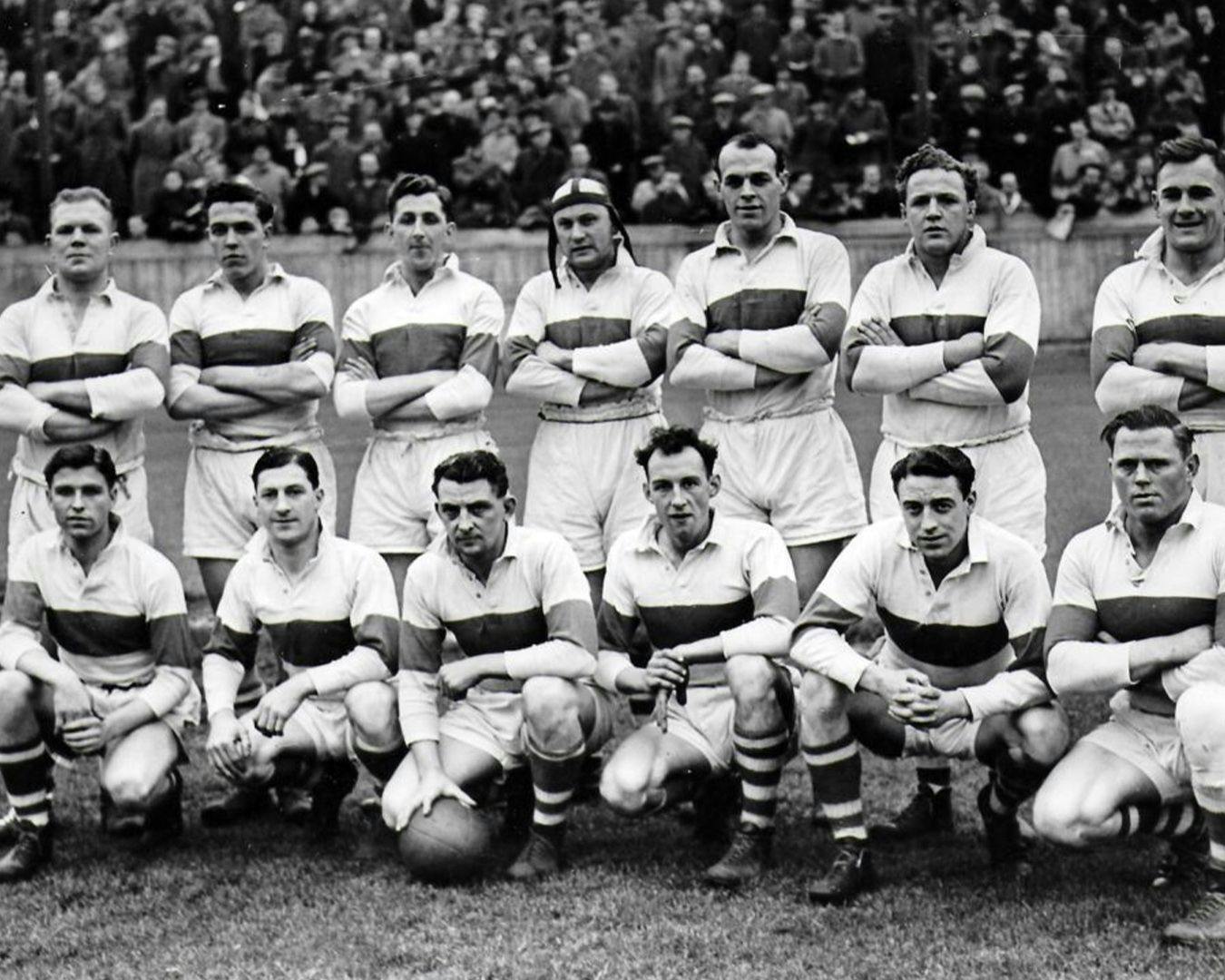
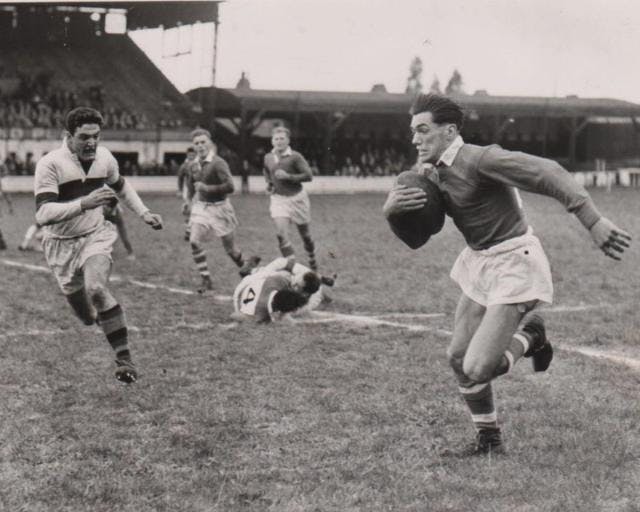
The Post-War Years
The optimism that accompanied the resumption after the war quickly dissipated, and the early 1950s were a very barren period, with the final position in 1953/54 of 29th out of 30 clubs being an all-time low. Attendances were low, player turn-over high, and with money in very short supply, it was only the doggedness of the directors that kept the club going during this time. Any promising players were invariably sold, notable exceptions being hooker Joe Ramsden and loose-forward Alec Dockar, who would have been good players in any era. By then, the influence of coaches was becoming greater, and Rovers’ board decided to bring a young coach with modern ideas to Craven Park. Accordingly, former Widnes and Hull FC full-back, Colin Hutton (pictured, right), by then at the end of his playing days, was signed in November 1957.
The directors found the money to back Hutton with some new signings, fairly modest ones at first, and despite a slow start, the influence of Hutton and the new imports started to pay off. Two important signings were those of Great Britain hooker Alvin Ackerley from Halifax for a bargain £750 at the beginning of 1959 and of Hunslet back-rower Harry Poole for a club record £6,000 in January 1961. In 1962, John Taylor became the club’s first player to be selected for a Great Britain tour of Australasia, and later that year Rovers won their first silverware for 33 years. They beat Huddersfield 13-10 in the final of the Eastern Division championship, with a side weakened by the injury of several key players in the Yorkshire Cup final defeat to Hunslet the week before. A corner had been turned.
In 1964, Rovers qualified to play at Wembley for the first time, losing 13-5 to Widnes in the Challenge Cup final. Although the final was disappointing, the run to Wembley is part of the club’s folklore. A home draw and a replay win at Rochdale in the first round was followed by comfortable wins over York and Barrow, but it was the semi-final that made history. A 5-5 draw with Oldham at Headingley was followed by a thriller at Swinton in the replay. Rovers led 14-7 with ten minutes to go and should have had the game won, but only one of four tries was converted and Oldham levelled at 14-14 after 80 minutes. Then, with 12 minutes of extra time played, and Oldham leading 17-14, referee Davies abandoned the game due to the poor light – there were no floodlights then! For the only time in RL history, a Challenge Cup semi-final went to a second replay. There were no dramas this time, and the Robins triumphed 12-2 at Fartown, Huddersfield.
The following season, Rovers strengthened the forwards in time for the Challenge Cup campaign with the signing of the Cumbrian pair of Frank Foster and Bill Holliday. But the Robins suffered an ignominious first round cup defeat 7-5 at home to Batley. Then, in August 1966, Rovers signed the brilliant 18-year old Castleford stand-off, Roger Millward – a name that was to become synonymous with the club. They won Yorkshire Cup in 1966 and 1967, and in 1968 the Robins appeared in their first championship final for 43 years, losing 17-10 to Wakefield Trinity in a great game. Later that year, Rovers signed Aussie great Arthur Beetson, but his stay at Craven Park was curtailed when he suffered a broken leg in the last ever Christmas Day derby of 1968.
When the 21-year lease on Craven Park came to its end at the end of the 1950s, the board had agreed an extension at an increased rent and had considered alternatives for the future. Land was purchased for a new ground on nearby Winchester Avenue, but in the end, the decision was made to buy back Craven Park, and this finally was completed in 1970. Also that year, Roger Millward, young second-rower Phil Lowe and hooker Peter Flanagan were part of the last Great Britain tour party to win the Ashes – it was Flanagan’s third tour to Australia, where his flamboyant style won him great popularity.
1971
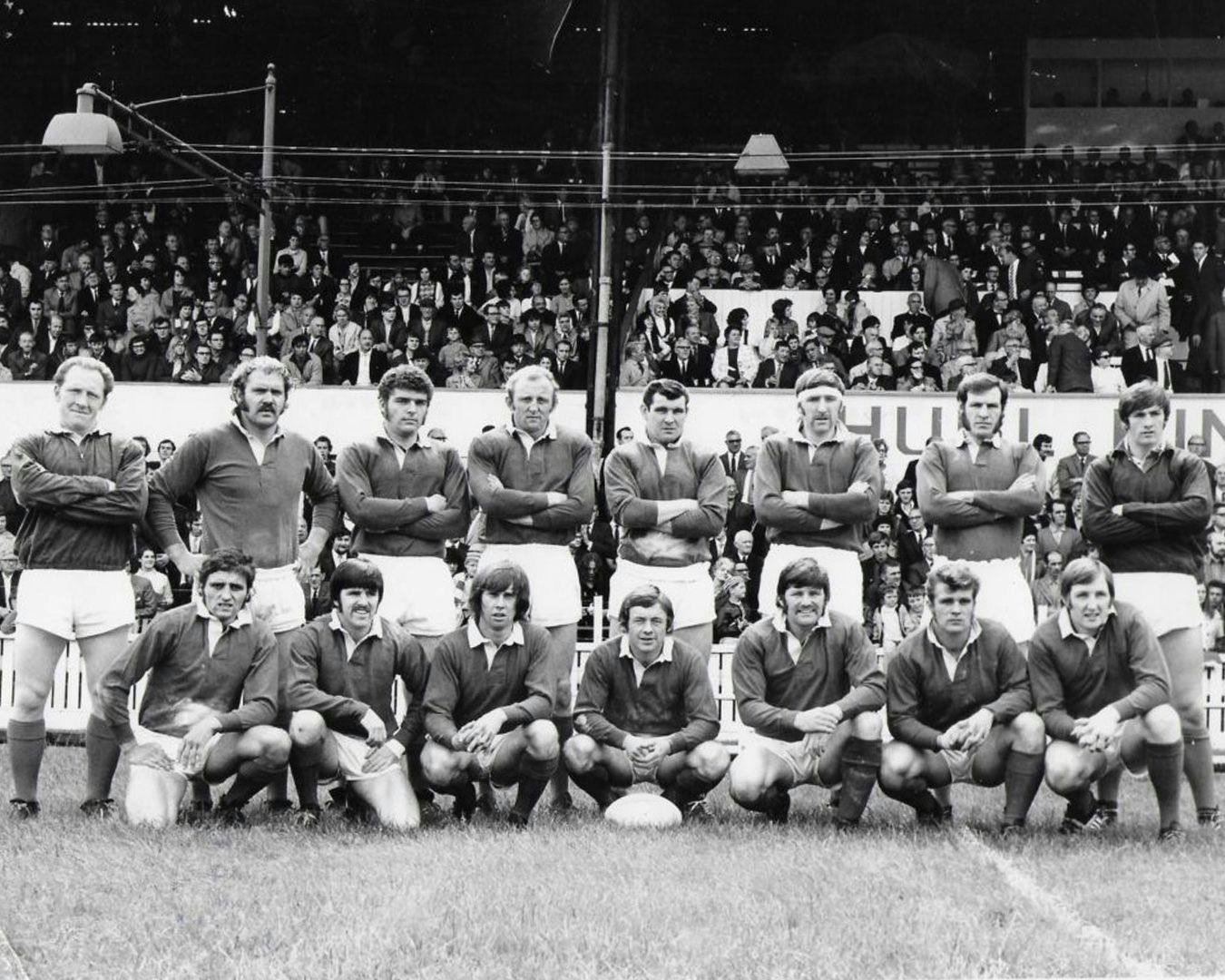
The 1970s, 1980s and Resurgent Robins
The 1970’s were an up and down period for Robins and they were relegated to the second division when the RFL again reverted to a two-division set up in 1973. But that relegation proved the catalyst for a more substantial revival. The directors responded to the set-back by signing a number of experienced players to augment some promising younger ones, including rugby league greats Neil Fox and Clive Sullivan.
With Millward as captain, Rovers won immediate promotion and gradually once more established themselves as a major force in the game. But before they achieved tangible success, however, they were hit by a double tragedy. Long-serving club chairman Wilf Spaven, who had led the club since 1958, died suddenly in March 1976. Then, twelve months later, coach Harry Poole collapsed and died on the eve of a Challenge Cup semi-final. Poole had returned to the club in 1975, the Robins’ first coach to have full control over team selection, and was just starting to make his mark on the team.
Millward took up the reins as captain-coach and led the team to victory in the 1977 BBC Floodlit Trophy, beating St. Helens 26-11 in the final. This was just the start though, and over the following eight seasons, the Robins won three championships, two Premierships, the Challenge Cup, the John Player Trophy and the Yorkshire Cup. The game for which the club is perhaps best known was the 1980 Challenge Cup final, which resulted in a 10-5 success over neighbours Hull FC (pictured). This game was the fruition of Millward’s dream, but during it he sustained a broken jaw, and retired from playing later that year. The brutal 1983 game against the touring Queensland side is written into club folklore, not just because of the 8-6 win, but because of the punch landed by Kiwi Mark Broadhurst on the tourists’ principal trouble-causer.
The 1983/84 side were the first ever to win the First Division Championship and follow up with the Premiership title, which they achieved with an 18-10 success over Castleford at Headingley. There were many great players, including record signing George Fairbairn at full-back, the prolific Gary Prohm and record appearance holder Mike Smith in the centres, props Mark Broadhurst and John Millington, hooker David Watkinson, hard man Len Casey, who took over from Millward as captain. This period eclipsed the 1920s as the most successful time in the club’s history.
But, history repeated itself, and the club went into decline in the mid-1980s both on and off the field. The now ageing stadium was costing more and more to maintain, and would cost many thousands more to be brought up to upcoming new safety standards; income from the club lottery, that had funded so much of the success, was falling, as was income from gates and season passes. Against this background, the directors took the decision to cut their losses, leave Craven Park and build a new stadium on Preston Road. By the time the club played their last game at Craven Park in March 1989, just three years after reaching a Wembley final, they had been relegated from the first division after 15 seasons.
The first season at the new stadium coincided with promotion back to Division One, and after avoiding relegation the following season, Roger Millward ended his 25-year association with the club. It that time he had won every honour and accolade the game could offer. He was undoubtedly the club’s greatest ever player, and its most successful coach.
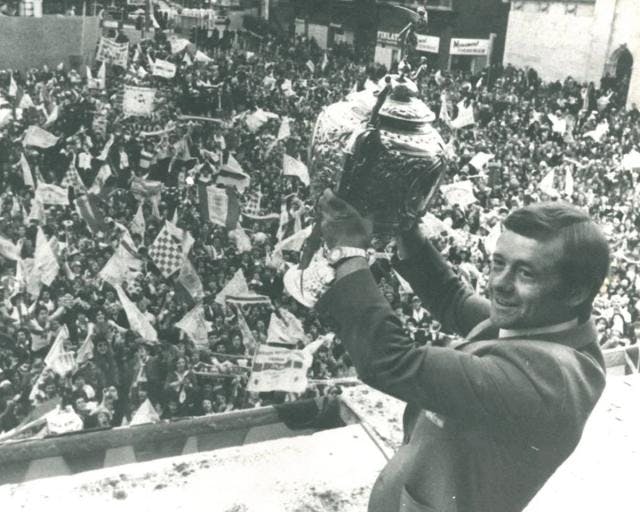
1990
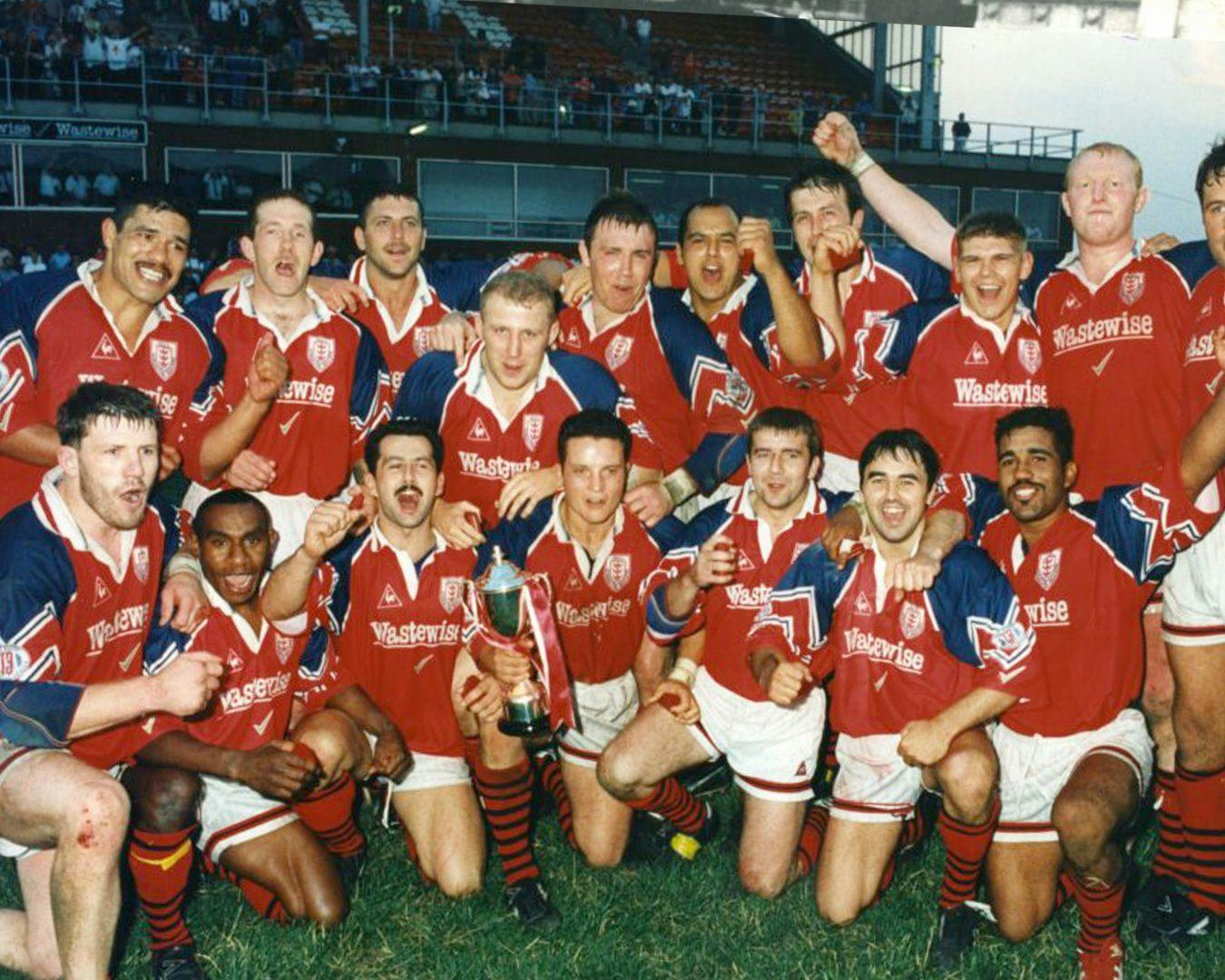
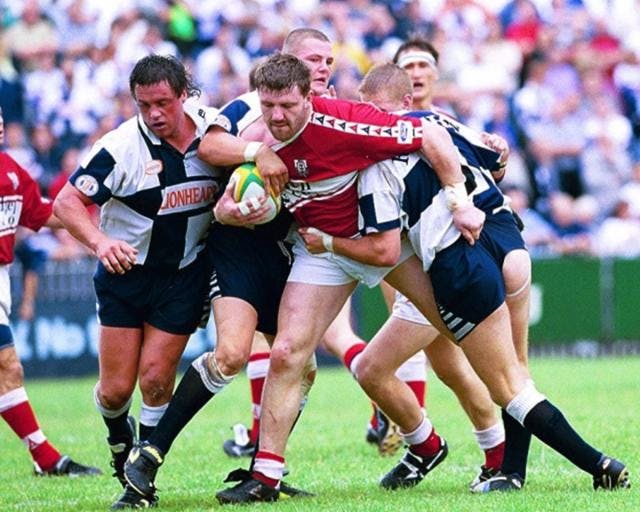
The 1990s, RSG and the New Millennium
The first season at the new stadium coincided with promotion back to Division One, and after avoiding relegation the following season, Roger Millward ended his 25-year association with the club. It that time he had won every honour and accolade the game could offer. He was undoubtedly the club’s greatest ever player, and its most successful coach.
The unenviable job of filling his coaching role fell to George Fairbairn – and against the background of severe financial constraints it was an impossible one. Three years later the club were again relegated to the second division, and this time there was to be no immediate return.
Indeed, after just one season in division two, yet another league reorganisation resulted in the Robins finding themselves in the third tier of the game for the shortened 1995/96 season, when the game switched to summer rugby. Rovers then achieved promotion by winning National League Division Two in 1996, but by the start of the following season, the off-the-field situation had become dire.
Hull Kingston Rovers entered administration in January 1997, and, but for the diligence of administrator Edward Klemka and the fund-raising activity of the Rovers Supporters Group, the 1997 season would almost certainly have been their last. On the field though, Rovers won the Challenge Cup plate in its' only season, beating Hunslet at Wembley 60-14. Then, against all odds, they finished second in the division the following season. An acceptable buyer was finally found in 2000, and the club came out of administration.
At first, progress on the field was limited and it was not until after Neil Hudgell took over as chairman and brought on board fellow investor Rob Crossland in 2004, that Rovers began to build a team capable of winning a place in Super League. After signing Australian play-maker James Webster they beat Castleford to win the National Leagues cup in 2005, and immediately after that game, another Aussie Justin Morgan took over as coach. 2005 also saw the final appearance of legendary second row forward Paul Fletcher. Fletcher had played in 464 games since his debut in 1988 – he could undoubtedly have played in Super League but chose to remain loyal to the Robins throughout his long career.
2006

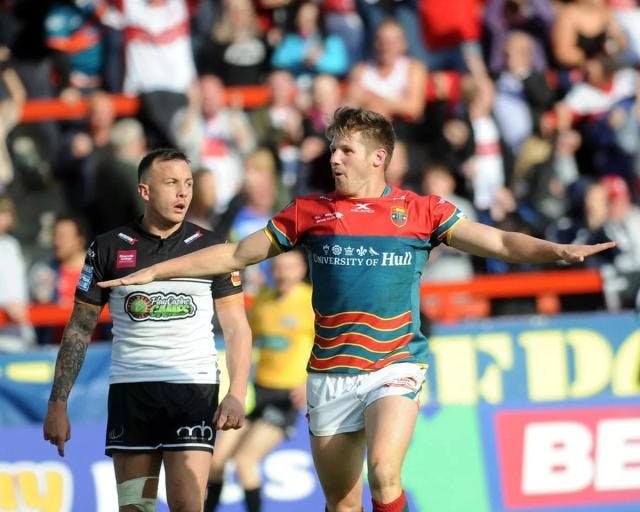
Super League and the Return of the Robins
In 2006, with a side of full-time professionals for the first time in the club’s history, the campaign started with 24 consecutive victories and culminated in a 27-14 win over Widnes in the National League Grand Final to clinch a place in Super League.
Perhaps though, a greater achievement was in staying in Super League in 2007. Aussie prop Michael Vella was the most influential signing, and 1990s PNG hero Stanley Gene returned to the club, but the side lacked quality in depth, and it was a close call. Higher calibre reinforcements arrived for the following season, including Sean Briscoe, Jake Webster, Clint Newton and Ben Galea; whilst another Australian play-maker, Michael Dobson, arrived to replace the injured James Webster in mid-season.
2009 was the club’s Super League high point to date, when fourth place was achieved and the Robins played in the Super League play-offs for the first time. Rovers first ever play-off win came in 2010 with a 21-4 win over local rivals Hull FC in a tremendous game at the KC Stadium.
At the end of 2011, Morgan left the club, along with a number of the senior players, and there were six debutants in the first match of 2012 – a pattern that has become familiar in recent years. 2013 saw the opening of the new North Stand that was named in honour of club president, Colin Hutton. In 2015, a great cup run saw the Robins reach the Challenge Cup final – their first major final since 1986 – but they were well beaten by Leeds Rhinos.
That season a new ‘Super 8s Qualifiers’ competition was introduced with the bottom four Super League sides and the top four National League sides competing for four places in the top flight. After finishing only tenth in the league table, Rovers retained their SL status for a tenth year with a 100% record in the ‘Middle 8s’, as the competition became known.
Club legend Roger Millward died after a long illness on 2 May 2016, and the club arranged a very moving tribute at the next home game, against Widnes. Finishing 11th in Super League, the Robins were again consigned to the ‘Qualifiers’ and this time failed to achieve an automatic qualification. They had to play Salford in a play-off, dubbed the ‘million-pound game,’ and slipped to an agonizing 19-18 defeat after holding an 18-10 lead with two minutes to go.
The relegation from Super League brought an amazing response from both supporters and sponsors, who pledged their support for 2017. The existing playing squad was pruned, with several high-earning imports leaving the club. Top Australian coach Tim Sheens was recruited and started to rebuild in order to push for an immediate return to the top echelon. But the club again was in mourning when, in February 2017, club president Colin Hutton passed away at the age of 90. Hutton had served the club for almost 60 years as coach, manager, director, chairman and president.
On the pitch, Hull KR won promotion back to Super League at the end of 2017 after a stellar season. Having secured the Championship League Leaders’ Shield, the club went on to win their opening five matches of the Super 8’s Qualifiers, including victories over Super League sides Leigh Centurions and Widnes, to secure an immediate return to the top flight at the first time of asking. The crucial victory came at home to the Vikings as a length-of-the-field score from the club’s 2017 top try-scorer Ryan Shaw earned the vital two points and sparked wild celebrations at Sewell Group Craven Park.
2018

Life back in Super League, Play-Off Semi-Final and New Hope
Consolidation in Super League was the name of the game in 2018, and it was duly achieved, albeit only via the ‘Qualifiers’ again, after Rovers finished tenth out of 12 in the league. With only five league wins in 16 games, Tim Sheens was sacked after a home Challenge Cup quarter-final defeat to Warrington at the end of May 2019. Another coach with a top pedigree replaced him, fellow Aussie, Tony Smith.
There was no immediate impact on the field, but, with a straight promotion/relegation system restored, the five more wins gained were sufficient to see the Robins edge above London on points difference and retain their Super League place. Bright spots in an otherwise disappointing season were the acquisition of future key performers Dean Hadley and Jez Litten, and the debut of former Academy star half-back Mikey Lewis.
2020 marked the arrival of Kiwi three-quarter Shaun Kenny-Dowall, and another future captain Elliot Minchella, one of five pre-season signings from Bradford Bulls. But start of the season was overshadowed by a serious spinal injury to popular Samoa prop Mose Masoe, resulting in real fears that the big man would never even walk again. That he subsequently did, is a testimony to his great courage and determination.
The season itself was devastated by the Covid-19 outbreak, which saw rugby suspended for nearly five months, and then resume behind closed doors, with the Robins having to play home games on neutral grounds. Fortunately for Hull KR, Toronto had to withdraw from Super League due to the pandemic, as a result of which it was decided that there would be no relegation.
The Robins finished bottom of the eleven remaining clubs, with just three wins from 17 games. Off the field, the most significant event was the return to the club of former Chief Executive Paul Lakin, who resumed his old role with full control over the day-to-day running of the club.
With Kenny-Dowall taking over the captain’s armband, and Smith’s more attack-minded coaching style, 2021 heralded an on-field revival. Legendary former Leeds winger Ryan Hall signed for the club on returning from a short stint in Australia, and marked his debut with a hat-trick of tries in a ‘home’ game against Catalans on his old stomping ground at Headingley.
Not until the end of May did Rovers play in front of spectators at Craven Park, over a year since less than 3,000 saw them beat Leigh at home in the Challenge Cup. The Robins rose to sixth in the table, qualifying for the play-offs for the first time in eight years, winning 19-0 at Warrington with a weakened side, before losing away to Catalans in the semi-final.

2022


Peters Arrives, Building for Success and Making History in 2025
For the 2022 season, Craven Park was rebranded as Sewell Group Craven Park, whilst the bulk of the previous season’s playing squad remained available. In April, coach Tony Smith unexpectedly announced that he would leave the club at the end of the season, and he was subsequently stood down at the start of July after seven defeats in eight games.
Former Leeds star Danny McGuire, who had ended his playing career with Hull KR in 2019 before joining the coaching staff, took over on an interim basis, whilst a third successive Australian head coach, Willie Peters, was recruited for 2023. The Red and Whites slipped two places in the final table to eighth.
More off the field developments in the close season saw Paul Sewell take over as club chairman with several new board members appointed. Rovers reached Wembley again, this time losing 19-18 in extra time to Leigh, and moved four places up to fourth in the final league table. Kenny-Dowall retired at the end of the season and took on a coaching role, and Elliot Minchella was appointed the new captain. In 2024, Rovers mourned the passing of another club great, former international second-row, director and chairman, Phil Lowe.
Hull KR moved two more places up the league table, finishing as runner-up to Wigan Warriors, to whom they lost narrowly in their first Grand Final appearance. Mikey Lewis became the first Rovers player to win the coveted Man of Steel award since Gavin Miller in 1986. Ryan Hall bowed out after the game, ending four seasons at Craven Park that had produced 61 tries in 106 games.
Bolstered for the season by the hugely experienced and successful front row duo of Jared Waerea-Hargreaves and Michael McIlorum, the Robins opened 2025 with only one defeat, again to Wigan, in the first 21 games of the season – their best-ever opening sequence at top-flight level. This run included a Challenge Cup final win over Warrington Wolves at Wembley – the club’s first major trophy in nearly 40 years.
The Robins went on to claim the League Leaders Shield for topping the Super League table, and went on to complete a historic treble by beating Wigan 24-6 in the Super league Grand Final. Four players, Peta Hiku, Lewis, Litten and Hadley were selected for the Super League dream team.





















